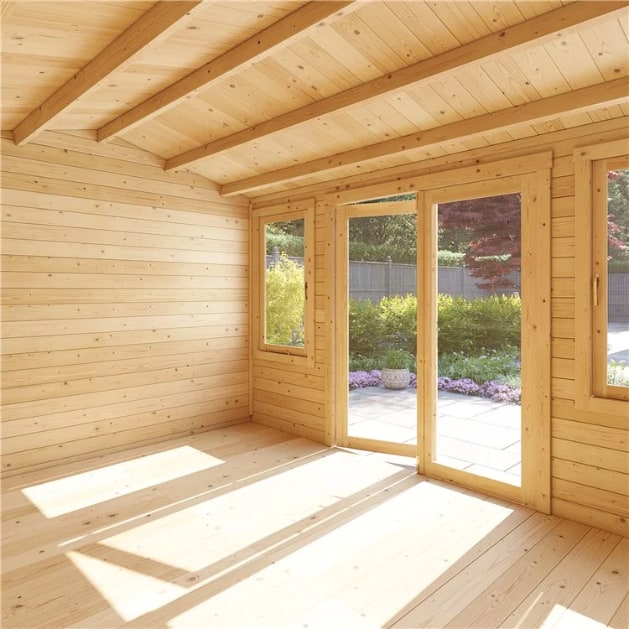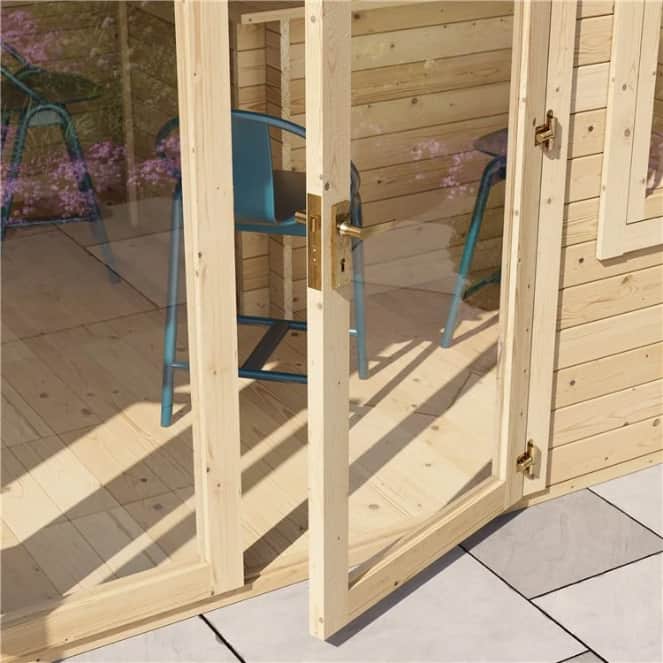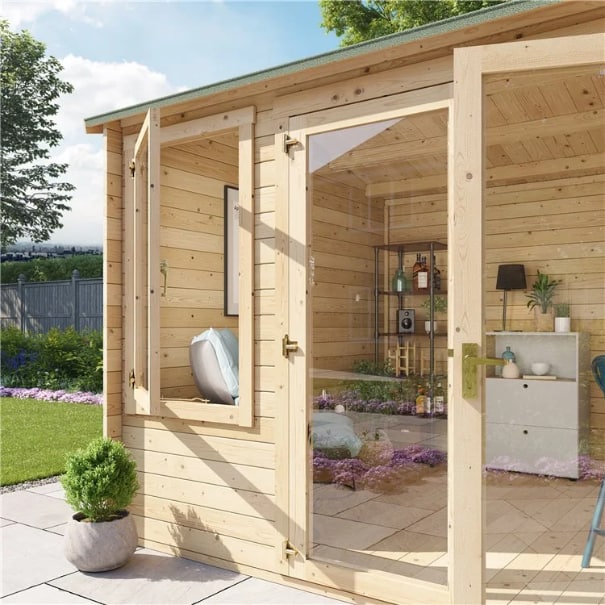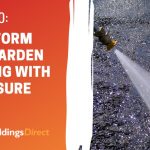Jump to:
The perfect log cabin isn’t solely defined by its appearance or size but also by its functionality. This specific aspect is where the importance of log thickness comes into play. The thicker the log, the stronger the cabin, making it suitable for frequent year-round use.
Here, we define log thickness, break down the options for the wall and floor, and provide some tips.
Defining Log Thickness and Its Significance
Log thickness refers to the width or diameter of the logs used in constructing a garden building. Thicker logs mean a stronger, more durable structure and better log cabin insulation. Want to keep the inside warm in winter and cool in summer? Great, then opting for a wider log size is essential. But what are your options, exactly?
What Choices Are Available for Wall Thickness?

There are thinner logs (19mm-28mm), mid-range ones (35mm-44mm), and thicker alternatives (70mm).
A log cabin with a 19mm-28mm thickness is suitable for basic use and occasional retreats. It’s ideal for smaller cabins where insulation and durability are less of a concern.
Suppose you’re building a small weekend getaway cabin in a temperate climate. Thinner logs may be sufficient for that reason. However, they may require additional insulation during colder seasons, though.
Logs with a thickness of 35mm-44mm balance strength and insulation – ideal for regular use. If the unit serves as your outdoor office, for one, this log dimension would be a practical choice.
Now, 70mm thicker logs are ideal for year-round usage and maximum insulation. They offer superior insulation properties while enhancing the cabin’s structural integrity. These logs are also best suited to regions with extreme cold or hot temperatures. The thickness would ensure the structure remains comfortable and well-protected against the elements.
How Thick Should My Cabin’s Floor?

The common options available include 18mm, 28mm, and 34mm above.
18mm is suitable for basic use and less frequent foot traffic. 28mm provides a sturdier foundation — best for regular use and moderate traffic. Meanwhile, 34mm and above offer maximum strength, durability, and support. Overall, the thicker the floor, the stronger the structure and foundation.
Insulation Is Great, But Are There Other Ways to Maximise It?

Yes, one such method is the use of double glazing in the log cabin’s windows. This involves installing windows with two panes of glass separated by a layer of inert gas or vacuum. This significantly reduces heat transfer, thereby minimising heat loss and maximising energy retention.
Consider a scenario where your cabin features 70mm thicker walls. When paired with double-glazed windows, insulation improves significantly. This makes the garden room cosier and more energy-efficient.
Note: Inert gas or vacuum fills the space between the two glass panes in double-glazed windows. It slows down the heat transfer to keep the cabin’s interior warmer or cooler, depending on the weather.
Round-up
Finding the right log dimension depends on your specific needs. For walls, choose between 19mm—28 mm, 35 mm- 44 mm, or 70mm. Flooring depends on expected foot traffic, with options of 18mm, 28mm, or 34mm. Overall, the best thickness for a log cabin ensures your retreat feels cosy and withstands the weather.
If you have any further questions, contact us and don’t hesitate to give us a call at 01909 768840. Up next on your reading list: Insulated Log Cabin Advantages: Why You Need One










